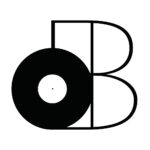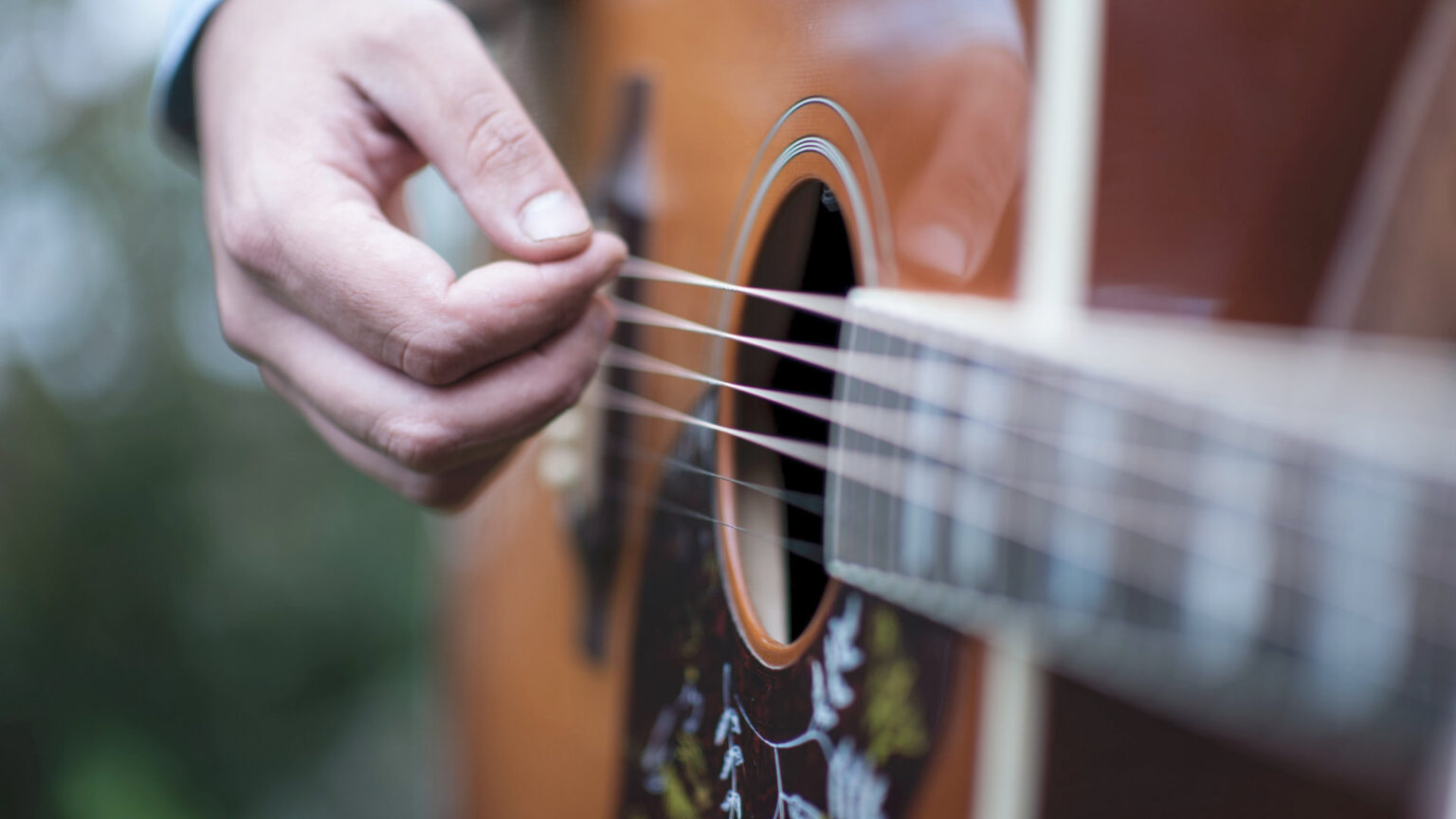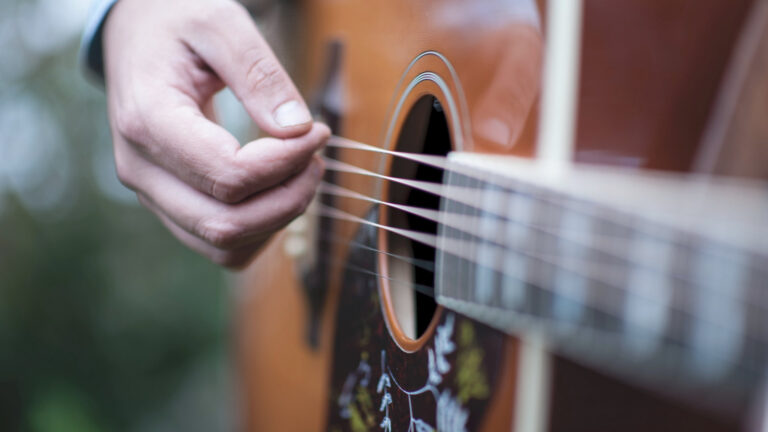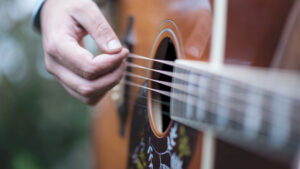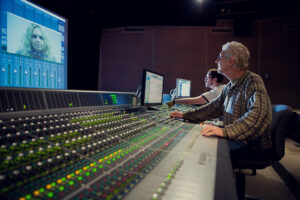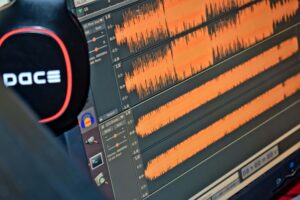Warm, rich and natural sounding… Now we need a microphone to compliment that!
The acoustic guitar is one of those instruments that require special consideration. That’s especially true because each one sounds DIFFERENT from the next.
That’s why we need one of the best microphones for recording acoustic guitar.
We’ll be looking at FOUR different microphones today for each main category (dynamic, ribbon and condenser) as well as a “special” microphone that I personally use.
I haven’t heard anybody recommending it, which surprised me!
I’ll also be telling you which type of microphone is best for recording acoustic guitar, but you’ll see that the answer is dependent on the type of sound you’re going for (and your situation).
So, let’s start by going over my personal list of the best microphones for acoustic guitar…
- Best Dynamic Microphone – AKG P5S
- Best Passive Ribbon Microphone – Avantone CR-14
- Best Multi-Pattern Condenser Microphone – Golden Age Project TC1
- Best Stereo Condenser Microphone – Samson C02
- What Type of Microphone Is Best for Recording Acoustic Guitar?
- Summary: 4 Best Microphones for Recording Acoustic Guitar
Best Dynamic Microphone – AKG P5S
| AKG P5S | |
| Type | Dynamic |
| Polar Pattern | Super Cardioid |
| Frequency Response | 40 – 20,000 Hz |
| Impedance | 580 Ohms |
| Accessories | – Microphone Clip – Carrying Case |
That’s right, I’m recommending the AKG P5S INSTEAD of the Shure SM57.
The SM57 might work for electric guitar, but we can’t treat an acoustic guitar the same way. Ideally, we shouldn’t even be using a dynamic microphone to record acoustic guitar.
However, we’re starting here because it’s the easiest type of microphone to record with.
I imagine that most of us don’t necessarily have the luxury of recording in an acoustically treated room and might have to deal with some ambient noise.
That’s one of the reasons you’d choose the AKG P5S over the other microphones on this list.
That being said, it’s one of the best dynamic microphones for recording acoustic guitar because it has an extended frequency response (40 – 20,000 Hz).
The Shure SM57 only goes from 50 – 15,000 Hz…
Granted, most acoustic guitar tracks will have a low pass filter applied during post-production, but I’d rather be able to capture that “shimmering” top-end.
That’s especially important for solo performances.
The acoustic guitar produces more overtones than an electric guitar (which doesn’t have much going on above 10,000 Hz), so we definitely don’t want to miss out.
The AKG P5S is also slightly more affordable than the Shure SM57.
Don’t let its appearance (and branding) fool you, the AKG P5S isn’t just a vocal microphone. It’s one of the most versatile dynamic microphones I’ve ever used.
Best Passive Ribbon Microphone – Avantone CR-14
| Avantone CR-14 | |
| Type | Ribbon |
| Polar Pattern | Bi-Directional |
| Frequency Response | 30 – 16,000 Hz |
| Impedance | 600 Ohms |
| Accessories | – Shock-Mount – Wooden Box – Metal Storage Case |
Now, we’ll be talking about a microphone that’ll feature your acoustic guitar’s bottom-end.
The Avantone CR-14 is the best ribbon microphone for recording acoustic guitar because of its dual-ribbon design and it’s vintage (yet contemporary) sound.
It’s a passive ribbon microphone so it’ll sound much more natural on acoustic guitar.
Despite being MUCH more affordable than your average ribbon microphone, it sounds just as good (if not better) than most.
It also includes EVERYTHING you’d possibly need right out of the box.
My favourite accessories are definitely the rugged metal storage case and the high-quality shock-mount.
Remember though, ribbon microphones are VERY DELICATE.
The ribbon element can be damaged very easily, but I have to admit that the Avantone CR-14 is relatively rugged despite that.
The dual-ribbon element also provides TWICE the output voltage.
That means that you’ll potentially save on an inline microphone preamp.
That being said, the only thing to keep in mind with ribbon microphones in general is that you’ll lose some of the top-end to focus on the bottom-end.
In this case, the sacrifice is absolutely worth it!
Best Multi-Pattern Condenser Microphone – Golden Age Project TC1
| Golden Age Project TC1 | |
| Type | Tube Condenser |
| Polar Pattern | Multi-Pattern |
| Frequency Response | 20 – 20,000 Hz |
| Impedance | 200 Ohms |
| Accessories | – Tube Preamp – Shock-Mount – Foam Windshield – Metal Storage Case |
Remember when I alluded to a “special” microphone in the introduction?
Well, the Golden Age Project TC1 is the microphone I personally use to record acoustic guitar (most of the time). That’s because it’s a TUBE condenser microphone.
Not only that, but it’s also got the ability to switch between NINE different polar patterns…
- Cardioid
- Bi-Directional
- Omnidirectional
AND each polar pattern has THREE shades in between that provide different ratios of each polar pattern.
For example, you’ll have “shades” in between cardioid and bi-directional that affect how sensitive the rear pickup is.
In the 100% bi-directional mode, it’s 100% front/100% rear.
When you go in between, you can have 100% front/50% rear.
The same concept applies to the shades in between bi-directional and omnidirectional. It’s truly one of the most versatile microphones I’ve ever used because of that!
BUT, it’s the richness you’ll get from the TUBES that really make this the best microphone for recording acoustic guitar.
What better way to complement a warm, rich and natural instrument with the tonal character of vacuum tubes.
You’ll just need to wait 10-15 minutes before the tubes warm-up properly to get the best sound.
The only other way to get this sound would be to purchase a tube preamp.
However, I doubt you’ll ever be able to beat the value that’s included with the Golden Age Project TC1 at this relatively affordable price. It includes EVERYTHING you’ll need including the tube preamp (essentially what it is), the shock-mount and a rugged metal storage case.
Also, the tube preamp powers the microphone so you won’t need Phantom Power.
Best Stereo Condenser Microphone – Samson C02
| Samson C02 | |
| Type | Condenser |
| Polar Pattern | Cardioid |
| Frequency Response | 50 – 20,000 Hz |
| Impedance | 200 Ohms |
| Accessories | – Shock-Mount Clips – Wind Muffs – Storage Case |
Lastly, you might want to consider recording acoustic guitar IN STEREO.
If that’s the case, then I recommend purchasing a pair of Samson C02s which are small-diaphragm (pencil) condenser microphones.
The additional directionality provided by the “pencil” tube design will assist in rejecting a bit of ambient noise. That’s something ribbon microphones and large-diaphragm condenser microphones will struggle with.
That being said, the Samson C02s still sound great and provide ample dynamic range.
If you’re debating between these and the AKG P5S, that would be the main difference. The dynamic range on the AKG P5S and other dynamic microphones usually suffer.
It’s also much more difficult to pull-off convincing stereo with dynamic microphones.
The Samson C02s come as a matched pair and even include an excellent shock-mounted microphone clip. The only problem is that you’ll need TWO microphone stands.
Instead, I’d recommend getting a stereo microphone bar and mounting them to that.
The storage case included with the Samson C02s is also much appreciated. It’s a pretty neat bundle for such an affordable price so you’ll definitely be satisfied.
My only complaint about the Samson C02s is the response in the bottom-end.
They can sound rather thin (especially when positioned far away), but maybe that’s the sound that you’re looking for.
I usually use them for overheads because of that, but still think they sound great on acoustic guitar in certain mixes.
What Type of Microphone Is Best for Recording Acoustic Guitar?
As I mentioned in the introduction, the answer will depend on the type of sound you’re going for.
To be more specific, you’ll want to record an acoustic guitar with a CONDENSER microphone if you want a brighter sound and more “sparkle” in the top-end.
However, some may prefer recording acoustic guitar with RIBBON microphones to get a darker sound with more richness in the bottom-end. It could also help tame some harshness in the top-end (if you’ve got a particularly bright-sounding instrument).
When it comes to dynamic microphones, I usually don’t like to use them on acoustic guitar.
The main reason dynamic microphones don’t sound as good on acoustic guitars is the reduced dynamic range. In other words, they’re LESS SENSITIVE.
That’s great if you’re trying to reduce ambient noise, but not ideal.
You’ll also need to position the microphone quite close (maybe too close) to the instrument and that’ll create what we refer to as the proximity effect.
That’s when the microphone begins to emphasize low frequencies.
It’s much easier to control on an electric guitar amplifier because of the possibility of EQing, but that’s NOT possible with an acoustic guitar.
That being said, you know how “bassy” some acoustic guitars can get…
So, the best way to tame that low-end is with a condenser microphone or if you really want to capture it accurately, go with a ribbon. It’s that simple!
Summary: 4 Best Microphones for Recording Acoustic Guitar
I thought you might want to compare the microphones we covered today side-by-side, so here’s a table that outlines the key features…
| AKG P5S | Avantone CR-14 | Golden Age Project TC1 | Samson C02 | |
| Type | Dynamic | Ribbon | Tube Condenser | Condenser |
| Polar Pattern | Super Cardioid | Bi-Directional | Multi-Pattern | Cardioid |
| Frequency Response | 40 – 20,000 Hz | 30 – 16,000 Hz | 20 – 20,000 Hz | 50 – 20,000 Hz |
| Impedance | 580 Ohms | 600 Ohms | 200 Ohms | 200 Ohms |
| Accessories | – Microphone Clip – Carrying Case | – Shock-Mount – Wooden Box – Metal Storage Case | – Tube Preamp – Shock-Mount – Foam Windshield – Metal Storage Case | – Shock-Mount Clips – Wind Muffs – Storage Case |
If you were only going to pick one of these microphones though, I’d go with the Golden Age Project TC1. It’s the most versatile microphone on this list.
In other words, it’ll serve you for other applications as well (vocals, drums, etc…).
If your recording environment isn’t that great though, maybe you’ll be better off with the AKG P5S.
It’s also one of the most versatile microphones I own, so it’s definitely a must-have!
So, I hope that you enjoyed reading about the best microphones for recording acoustic guitar. Of course, these are MY personal picks and would love to hear yours as well.
Feel free to share your favourite microphones for recording acoustic guitar with us down in the comments and ask your questions too.
Thanks for reading! I hope that you’ll join the dB_Network on Discord and that you’ll consider supporting us on Patreon if you enjoy the content.
Sources
https://www.akg.com/Microphones/Dynamic%20Microphones/P5S.html
http://www.avantonepro.com/cr-14.php
https://www.goldenageproject.com/microphones-2/tc-1-with-accusound-cable/
http://www.samsontech.com/samson/products/microphones/condenser-microphones/c02/
